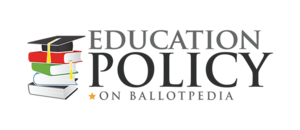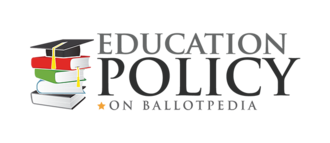School vouchers
This article does not receive scheduled updates. If you would like to help our coverage grow, consider donating to Ballotpedia. Contact our team to suggest an update.
| Education policy in the U.S. |
| Public education in the U.S. |
| School choice in the U.S. |
| Charter schools in the U.S. |
| Higher education in the U.S. |
| Glossary of education terms |
| Education statistics |
School vouchers, also known as opportunity scholarships, are government-funded scholarships which allow public school students to attend private schools. Vouchers redirect the state per-pupil education funding, giving it directly to individual families instead of school districts. Families can then select the public or private schools of their choice and have all or part of the tuition paid by the government. School vouchers, or scholarships, are part of the school choice movement, which aims to expand parental choice and enhance competition between public and private schools to improve education for all children. Vouchers can be funded and administered by the government, private organizations, or some combination of both.[1]
In order accept voucher recipients, private schools must meet minimum standards established by legislatures. Legislatures also decide which students are eligible to receive vouchers, typically targeting student subgroups, such as low-income students that meet a specified income threshold, students attending chronically low-performing schools, students with disabilities, students from military families or students in foster care.[2]
Voucher programs exist in 13 states and the District of Columbia as of April 2016.
History
State support for private school education is not entirely new. For nearly 140 years, Maine and Vermont had ongoing programs to provide public funding to private schools for rural students who did not have a public school near their home. However, in 1954 in Maine, and then in 1964 in Vermont it was made illegal to spend public funds on private religious schools.
In response to the growing cost and dissatisfaction of parents with public schools, economist Milton Friedman, in his 1955 paper, “The Role of Government in Education," first proposed using public dollars to pay private school tuition. He argued that introducing competition among schools would increase student achievement and decrease the cost of education.[3]
Some important dates
- In 1989 the Wisconsin State Legislature passed the nation’s first modern school voucher program for students from low-income households in the Milwaukee School District.
- In June 1998 the Wisconsin Supreme Court ruled that the expanded Milwaukee voucher program—allowing up to 15,000 children to attend any religious or another private school—did not violate either the state or federal constitutions. This decision was appealed to the U.S. Supreme Court, which voted eight to one not to hear the case, thereby upholding the ruling.[4]
- In 2001 Florida became the first state to offer private school vouchers to students with disabilities when it enacted the John M. McKay Scholarships Program for Students with Disabilities.
- In 2004 the first federally funded and administered voucher program was enacted by the United States Congress for Washington, D.C., offering private school vouchers to low-income students, and giving priority to those attending low-performing public schools.
- In 2007 the Utah State Legislature passed legislation creating the first statewide universal school voucher program, making vouchers available to any student in the state with no limitations on student eligibility. In November 2007 that legislation was placed on the state ballot for voter approval, and that ballot measure, Referendum 1, was voted down, so the legislation was never implemented. Utah does have a special needs voucher program that was not affected by the vote.
- In 2011 the nation’s first state-wide school voucher program for low-income students was created in Indiana.[5]
Reaction
Support
Those who argue for private school choice believe that parents will choose the highest performing school available to them if they have a choice of where they can send their child to school. This, in turn, will have a "ripple effect," and force those poorly performing schools to either improve or risk losing students and the funding tied to those students. Even though many states have charter schools, which serve the same purpose—offering choice, accountability, and competition—private schools have even more flexibility in staffing, budgeting, curriculum, academic standards and accountability systems. Supporters argue that this flexibility leads to market competition and cost efficiency which benefits students, parents and taxpayers.[6]
Against
The largest teachers' union, the National Education Association, is clearly against vouchers, as stated on their website:
| “ | NEA opposes school vouchers because they divert essential resources from public schools to private and religious schools while offering no real "choice" for the overwhelming majority of students. Teachers, parents, and the general public have long opposed private school tuition vouchers — especially when funds for vouchers compete with funds for overall improvements in America's public schools. NEA and its affiliates have been leaders in the fight to improve public schools— and oppose alternatives that divert attention, energy, and resources from efforts to reduce class size, enhance teacher quality, and provide every student with books, computers, and safe and orderly schools.[7][8] | ” |
Many groups oppose vouchers on the basis of the separation of church and state, the so-called Establishment clause of the First Amendment, since most of the private schools serving underprivileged children are parochial schools. The Supreme Court of the United States has held repeatedly, and most recently in the 2002 Zelman v. Simmons-Harris decision, that this is not the case. That case upheld the constitutionality of the Ohio state voucher system, even though over 90 percent of the financial aid went to parents with students in religious—as opposed to non-sectarian private—schools. Chief Justice Rehnquist in writing for the majority emphasized that the program was neutral with respect to religion, and therefore was "not readily subject to challenge under the Establishment Clause." Those opposed claimed that the voucher provisions were "skewed toward benefitting religious schools" and "risked creating a form of religiously based conflict harmful to the Nation's social fabric."[9]
Some states have education articles in their constitutions that explicitly restrict all educational expenditures for public schools. As many as 37 states, for example, have so-called "Blaine amendments" in their constitutions which present a legal hurdle for supporters and a more robust legal case for those opposed to using state funds for poor children to attend religious schools. Blaine amendments prohibit the use of state funds at “sectarian” schools, and arose out of the anti-immigrant, anti-Catholic views of the second half of the 19th century.[10]
See also
Footnotes
- ↑ schoolchoices.org, "School Vouchers: Issues and Arguments
- ↑ National Council for State Legislatures, "School Vouchers," accessed May 2, 2014
- ↑ National Council for State Legislatures, "School Vouchers," accessed May 2, 2014
- ↑ Schoolchoices.org, "School vouchers, Judicial Verdicts," accessed May 2, 2014
- ↑ National Council for State Legislatures, "School Vouchers," accessed May 2, 2014
- ↑ National Council for State Legislatures, "School Vouchers," accessed May 2, 2014
- ↑ National Education Association, "Vouchers," accessed May 2, 2014
- ↑ Note: This text is quoted verbatim from the original source. Any inconsistencies are attributable to the original source.
- ↑ Exploring Constitutional Conflicts, "Vouchers, Tax Credits & Other Aid to Religious Schools," accessed May 5, 2014]
- ↑ Fordham Law Review, "Secularism's Laws: State Blaine Amendments and Religious Persecution," by Kyle Duncan, Volume 73, Issue 23, 2003.
| |||||||||||

